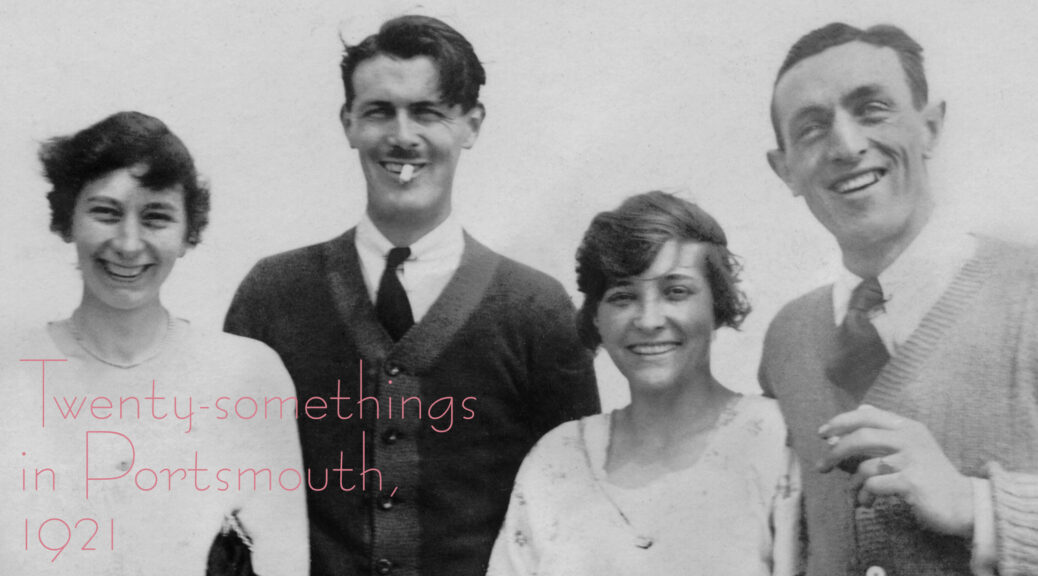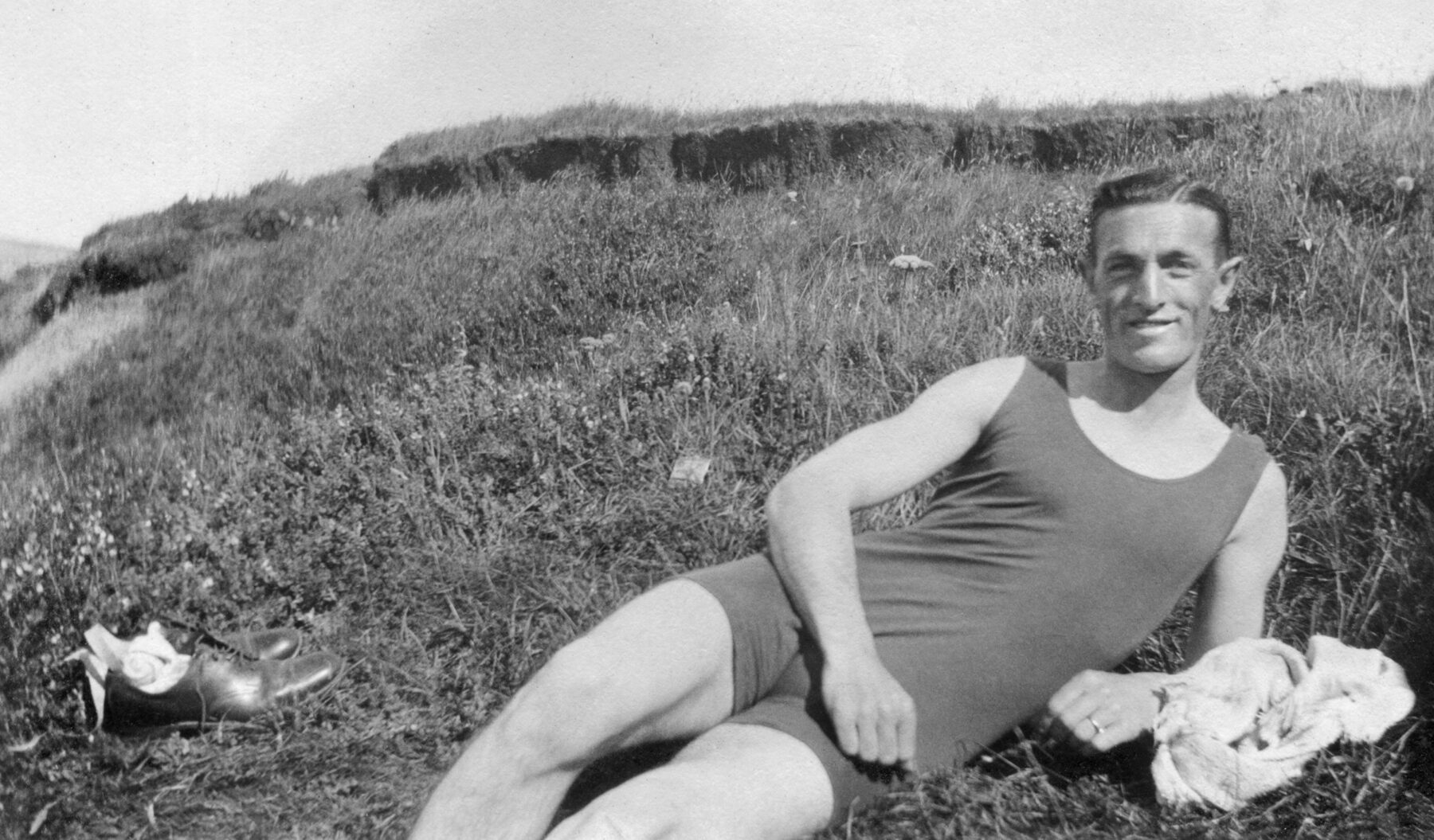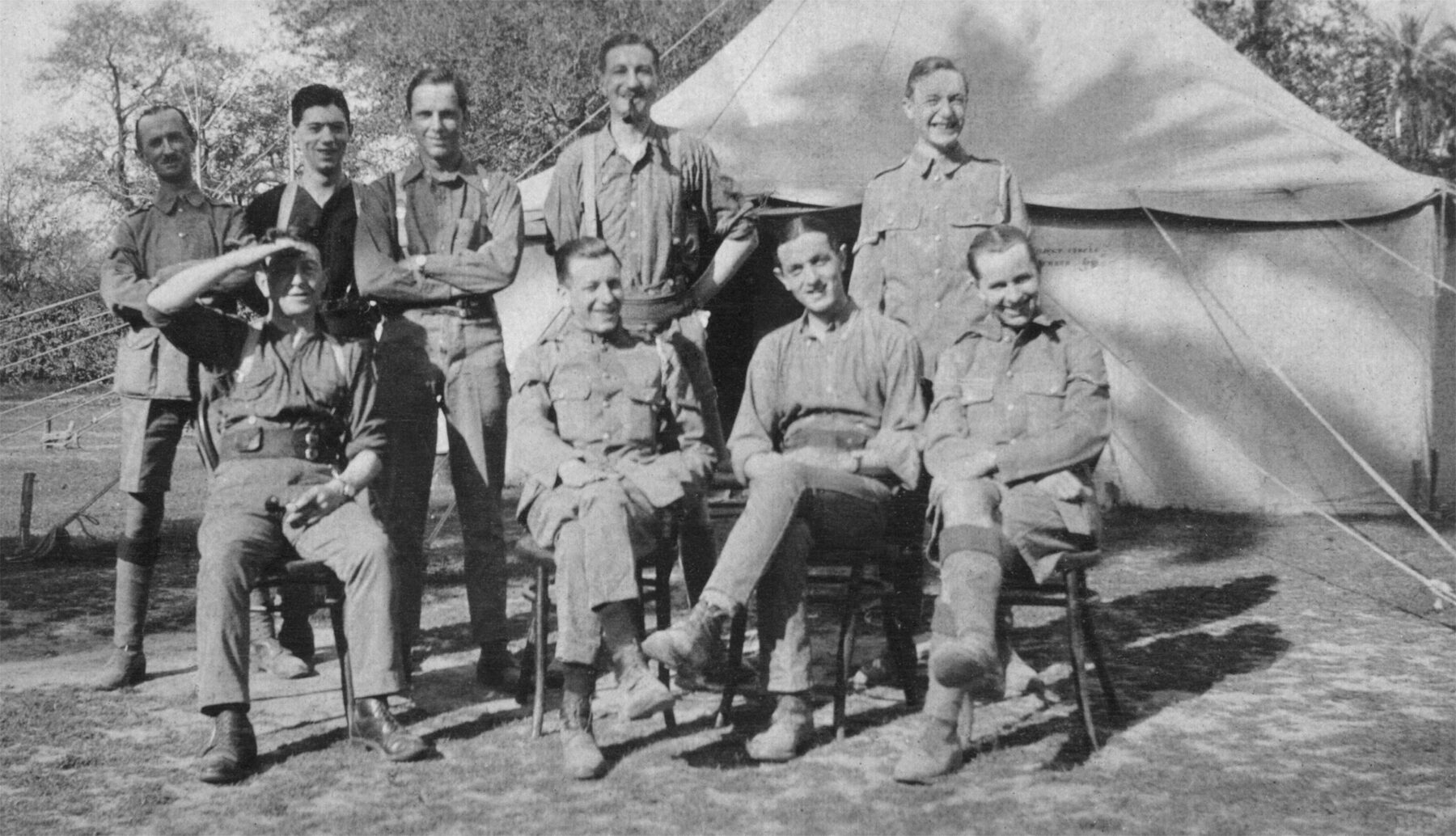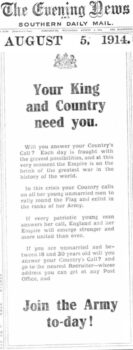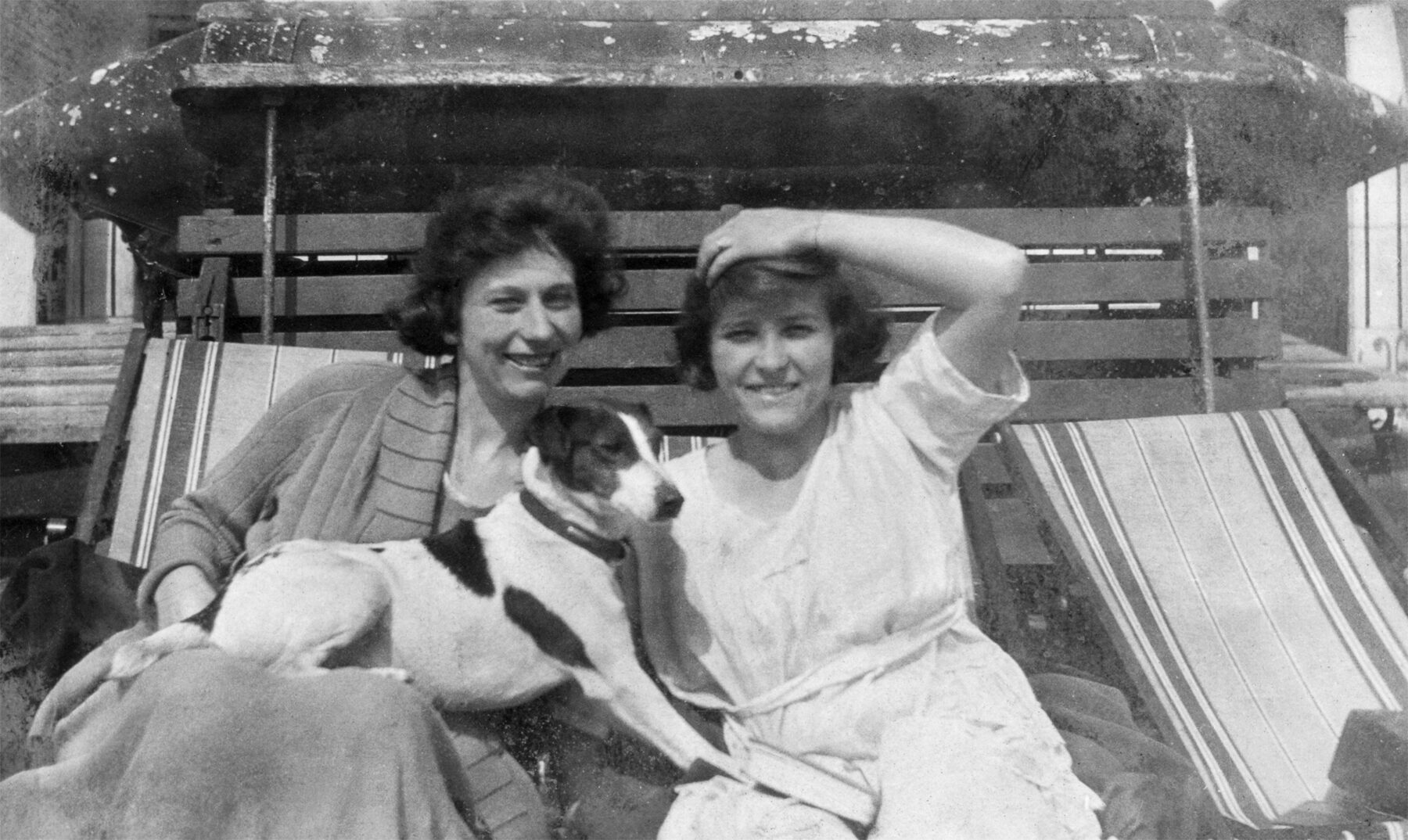My paternal grandparents married in St. Luke’s Church in Portsea (Portsmouth) in April 1923 after about 3 years of knowing each other. Portsmouth wasn’t a family home for either of them. Gamps and his sister Goggie had left their home in Knottingley, Yorkshire to live with their Aunt Mary in Portsmouth in 1910. In 1913, Goggie went to Chiswick Hospital to train as a nurse; in January 1914 their uncle died. August 4th Britain declared war on Germany and that day my 17-year-old grandfather lied about his age to join the 2nd Hants. Battery; on October 9th he was on his way to India.
Nanny’s family ran a tobacconist in Portsmouth after her father, Ernest Henry Williams, retired from the Army in 1907 – she was born in Malta during one of their overseas tours (two younger brothers were born in Bermuda). Whether they realized it or not, something Gamps & Nanny had in common was having moved around and being apart from most of their families.
I don’t know how they met but had long assumed it was via Gamps’ friendship with fellow bank clerk and cricket fanatic Ernie – Ernie was married to my grandmother’s older sister. Turns out there was a bit more to the story.
My grandfather was “disembodied” from the Royal Field Artillery in February 1920. He used Goggie’s address in Southsea for military paperwork – she returned after qualifying as a nurse during the war. It made sense for him to return to the one stable family connection he had – Goggie – as he established himself in civilian life. Based on pictures in photo albums I inherited, I imagined my grandparents as a young couple enjoying their pre-parenthood years (my father was born in 1926) in and around Portsmouth & Southsea. I had a vague notion of the “Roaring Twenties” and a decade of partying after the Great War was over, but that wasn’t true for the UK which, after a brief post-war boom, had a depressed economy and rising unemployment, particularly hard for all the returning servicemen. Rationing was still in place in 1920 and price controls were slowly being eased. Gamps was one of the lucky ones because his grandfather Edwin Llewellyn Poulson had a contact who somehow got Gamps hired as a clerk with Barclays Bank.
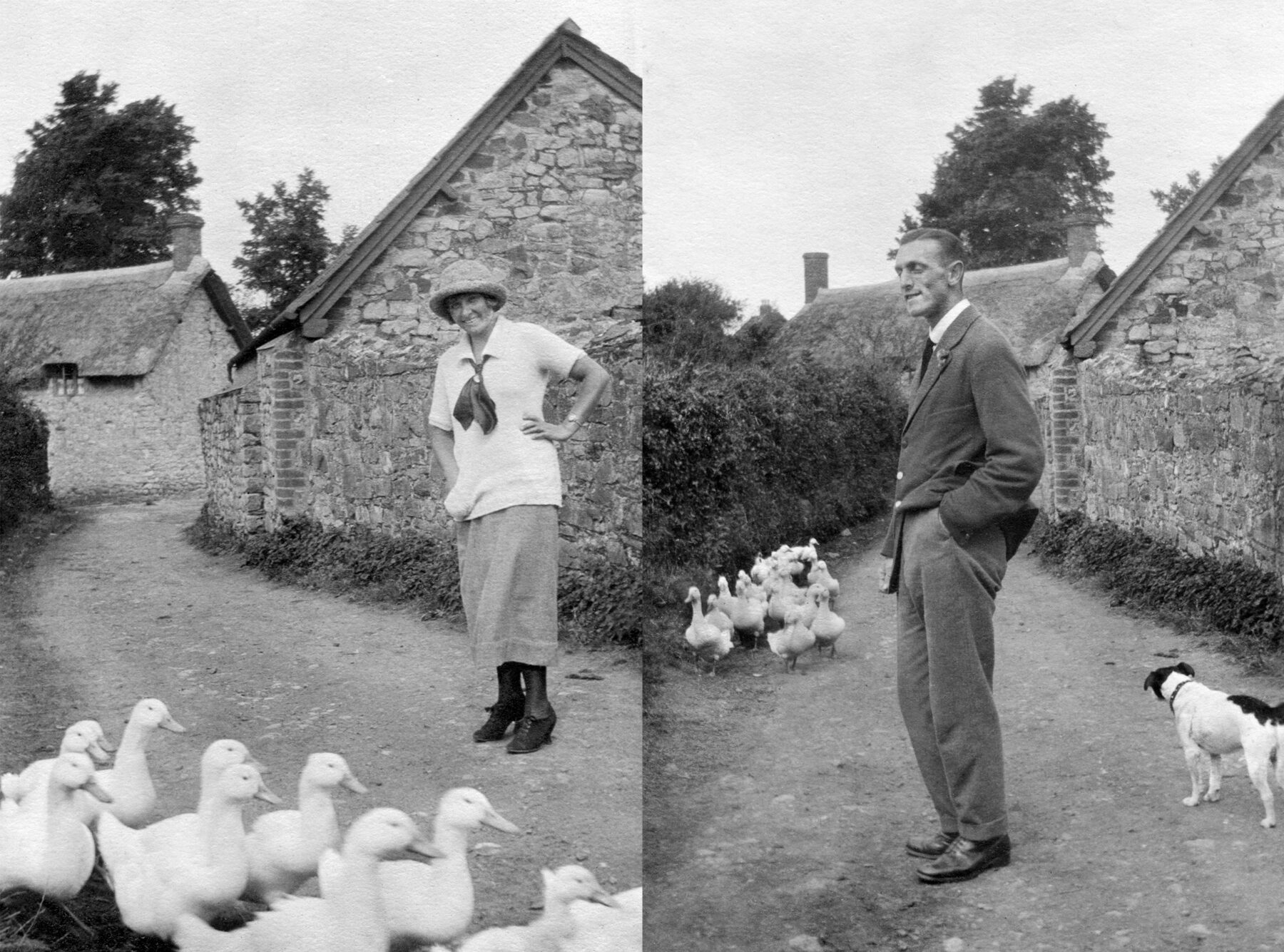
I knew that Gamps had become a manager at Barclays, but never thought much about his early work life. A search in the local newspapers revealed that there was an active attempt to organize a union to get better pay nationwide for bank clerks – pay was less in real terms than before the war. One report of a Guild meeting pointed out that dustmen made more than bank clerks. Another article mentioned Portsmouth had only a very small proportion of its clerks working with the Guild and that reminded me of Gamps’ strong anti-union views (he became visibly angry when discussing them when I told him I was joining the National Union of Students in 1973). A visiting Guild official from London said that clerks were “too respectable to talk of the disadvantages under which they laboured.” That they liked to be found among the “nobs” but were only just realizing that they weren’t “nobs”!
Goggie was a Health Visitor, working for the Portsmouth Health Department, and there were several articles about local councils and Boards of Guardians (those administering relief and the workhouses) arguing over whether they needed health visitors at all, or in such large numbers, or at such high salaries. Petersfield Council had cut back their nurse/health visitor salaries by £25 per year from the £220 per year war-time level. The local papers had many ads for rooms to let – often saying things like “suitable gentlemen” or “lady teachers or bank clerks” or “suitable for men engaged during the day”. Many said “no children”! Portsmouth was at the time the 12th largest city in England – larger than Stoke-on-Trent; smaller than Nottingham – so a reasonable place to find work and begin to make your post-war life.
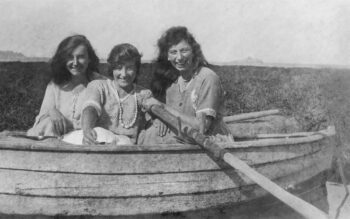
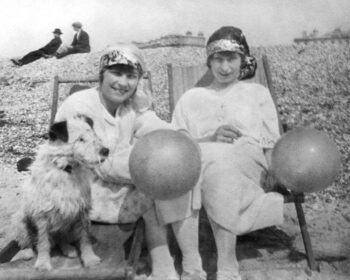
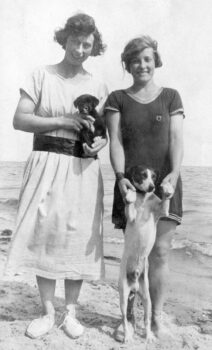
Portsmouth also had lots to offer if you liked beaches or swimming. Or had a dog to walk – or a puppy to play with. Many of the early 1920s pictures in the albums I inherited feature the same cast of characters and beach settings. Once I saw the 1921 census, I began to see why.

Doris Marguerite Poulson (Goggie) the head (Health Visitor with the Portsmouth Health Department), her brother John Ernest Llewellyn Poulson (Gamps), a bank clerk with Barclays Bank and Lilian Melita Williams, a boarder who worked for a tobacconist in Southsea. The word gobsmacked comes to mind! My grandfather the bank clerk completed everything except the names & ages – I’d recognize his writing anywhere. Goggie didn’t know how to spell Nanny’s name, so they can’t have known each other all that well even if she became a boarder before she and Gamps started dating. I don’t know when this arrangement started- the nursing registers go from 17 Shaftesbury Avenue Southsea in 1920 to Bank House in Portsmouth in 1924. Gamps was nearly 23 as he left the RFA in 1920 and staying with Goggie made sense given the low pay for bank clerks.
My grandparents were living together – something I would have said my grandfather would never have approved of. That prompted questions about whether Goggie & my grandmother knew each other – perhaps she had frequented the Williams’ tobacconist shop further up Commercial Road (274)? And were Gamps & Nanny a couple while Nanny was technically the boarder? Would this have been a scandal if Nanny’s mother knew (her father had died in 1919)? Except that Gamps’ father was newly-married to his 3rd wife and about to start embezzling from his employer, perhaps he’d have disapproved? What about Edwin Llewellyn Poulson the pottery owner – would he have worried that John Ernest Llewellyn was on the unstable path that John Walden Poulson had earlier wandered down?
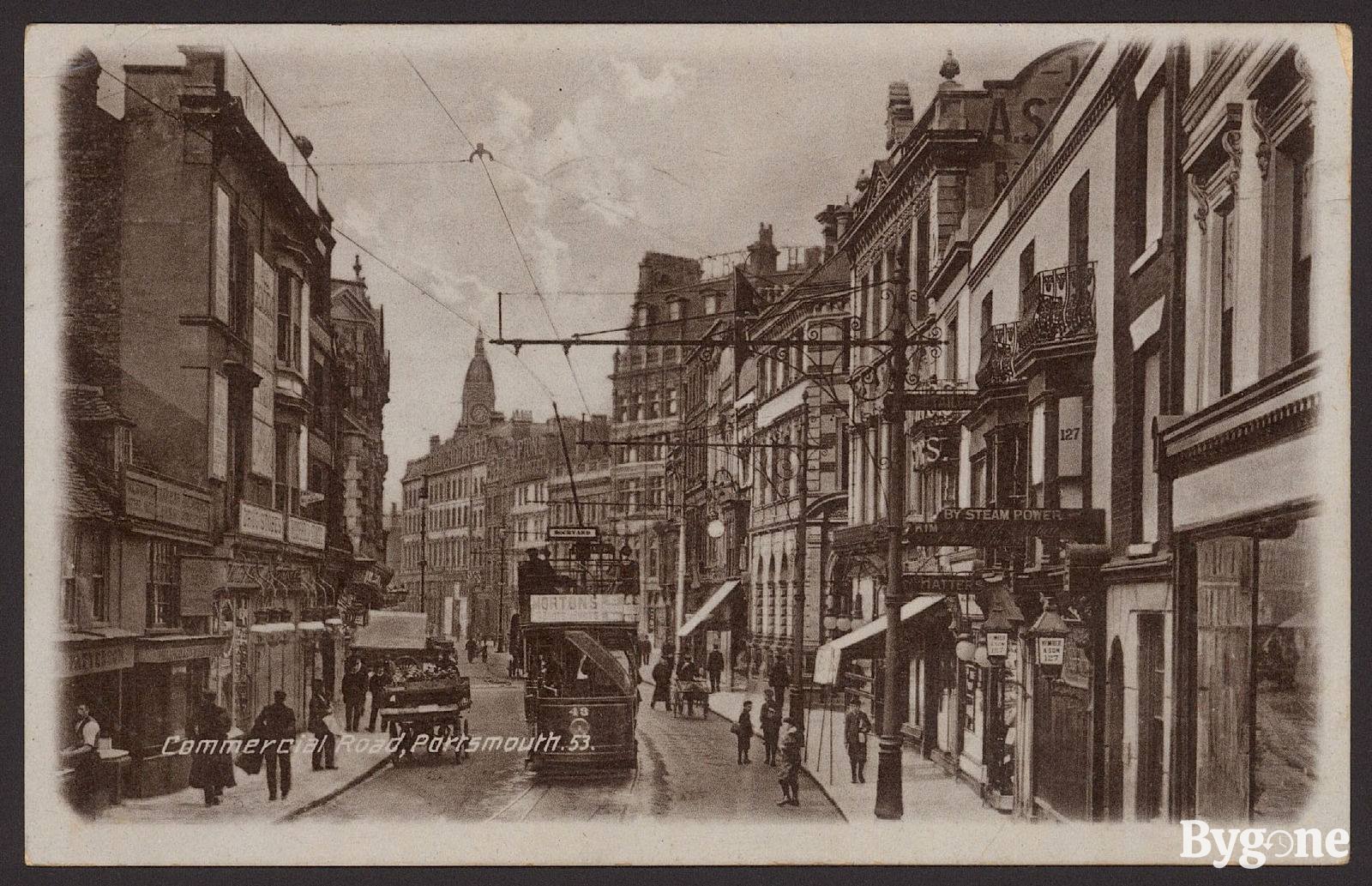
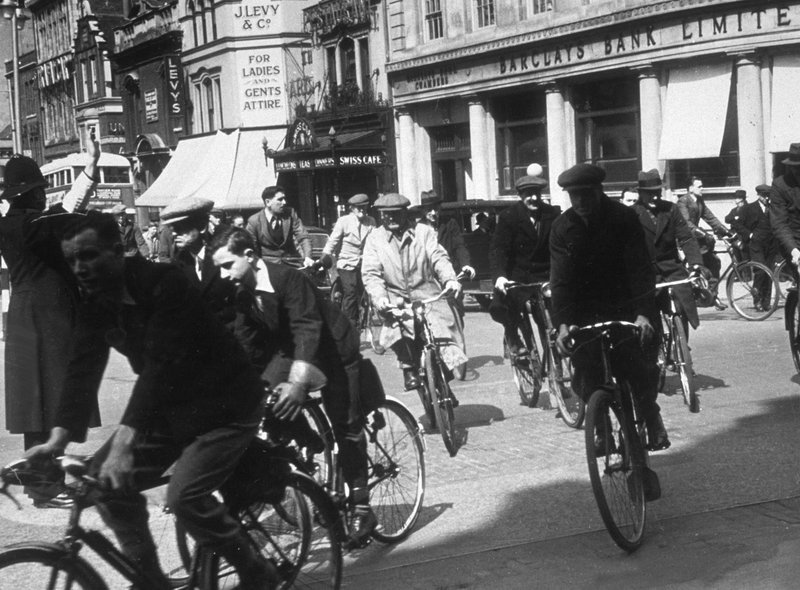
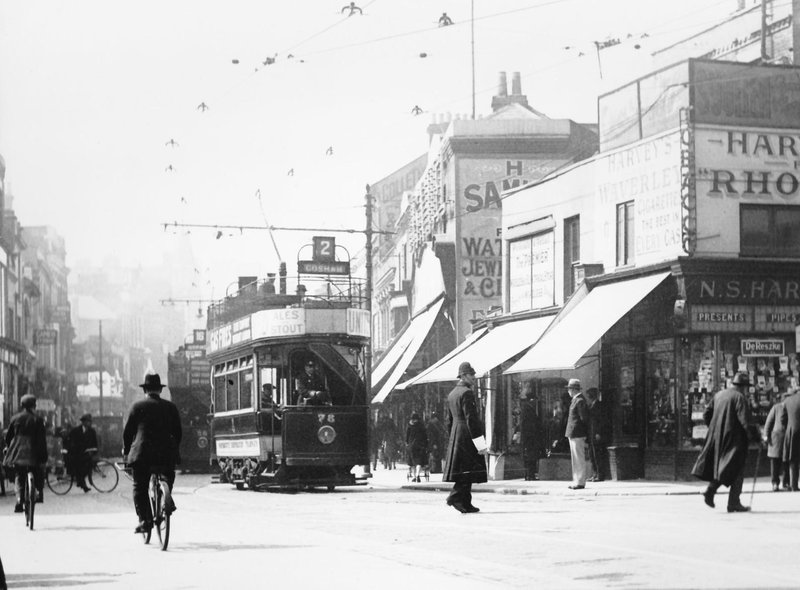
Many parts of Portsmouth were bombed in WWII and I haven’t been able to find any old photos of pre-war Portsmouth to see what 89 Commercial Road looked like. It was a very central location – near the train station – and could have been lodgings above office space (there was a firm of solicitors and a typewriter repair shop at that address too).
Until the 1921 census was available, the next record was Gamps’ marriage certificate when he and my grandmother both listed Bank House in Portsmouth as their address. I was puzzled they both used the same address, given society’s attitude about living together before marriage, but thought perhaps these were their new lodgings after the ceremony. A local historian told me that Bank House was the manager’s house for the London & Provincial Bank (which was bought by Barclays in 1918), so possibly they were lodgers there? All speculative, but seemed reasonable to me. It’s lovely to see such happy photos of the young couple and Goggie – and other than trying to fit together the two very different attitudes about social norms, having a “to heck with what people think” grandfather would be fine with me. I would want to understand the switchover to a person who lived by rules though.
The sentimental side of me wants to end with one more happy photo from much later (1950s) of these two lovely, if puzzling, people.
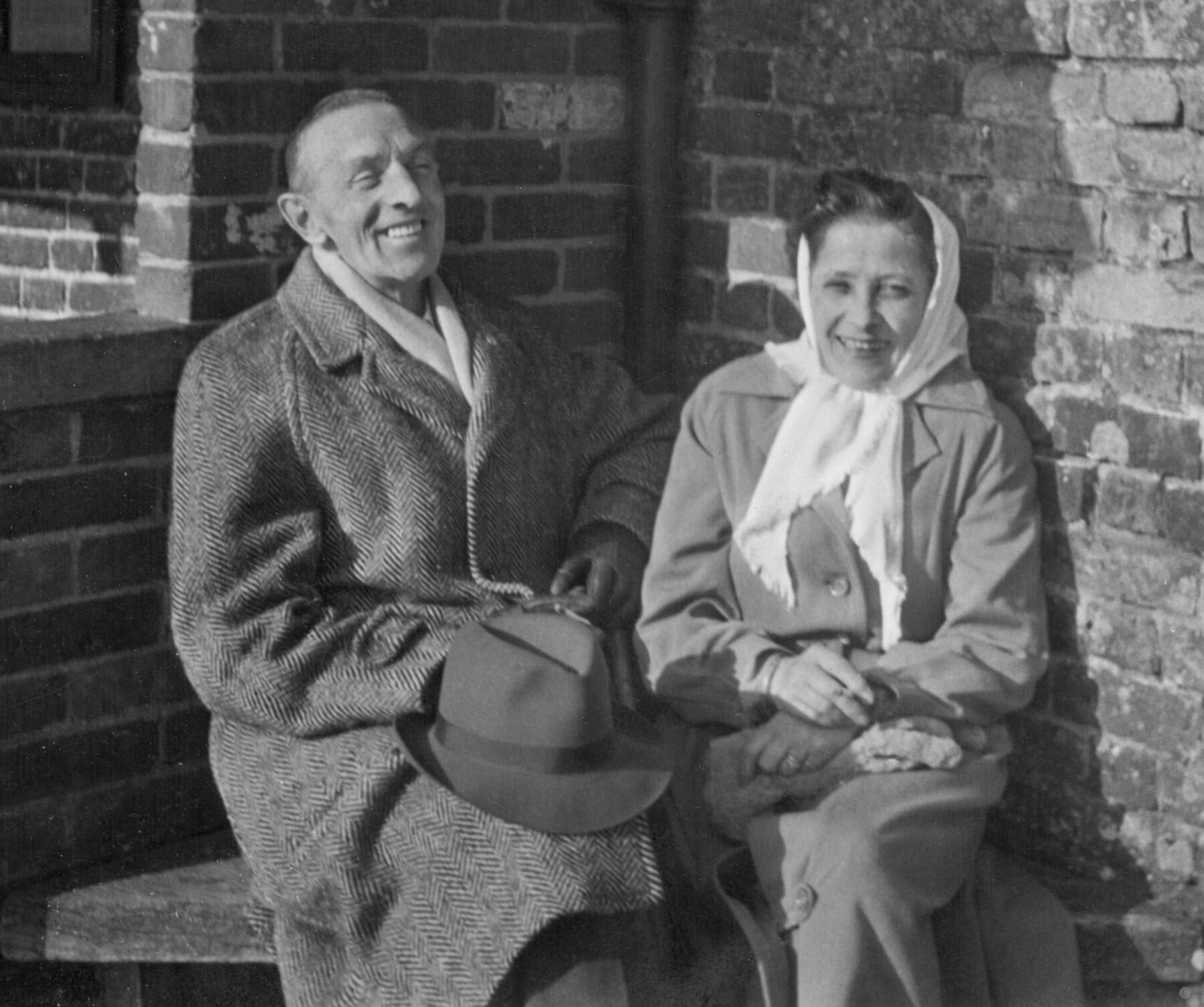
If you’re interested in more on the British economy after World War 1 this might fill out the story: Walking wounded – British economy after WWI. The blog image at the top is of Goggie, Ernie, Nanny & Gamps.

